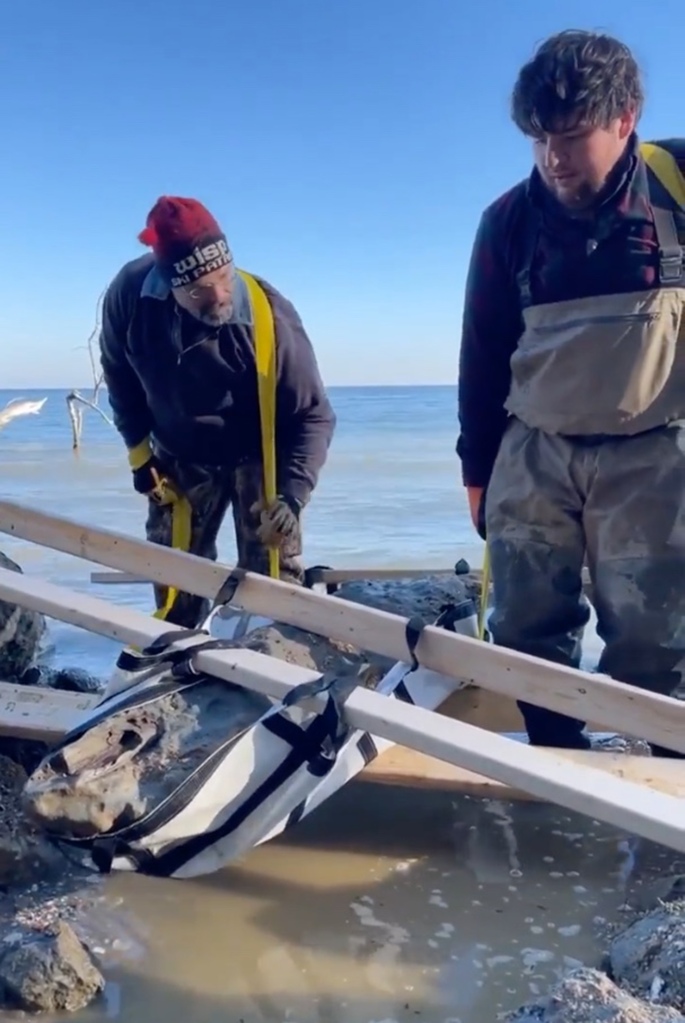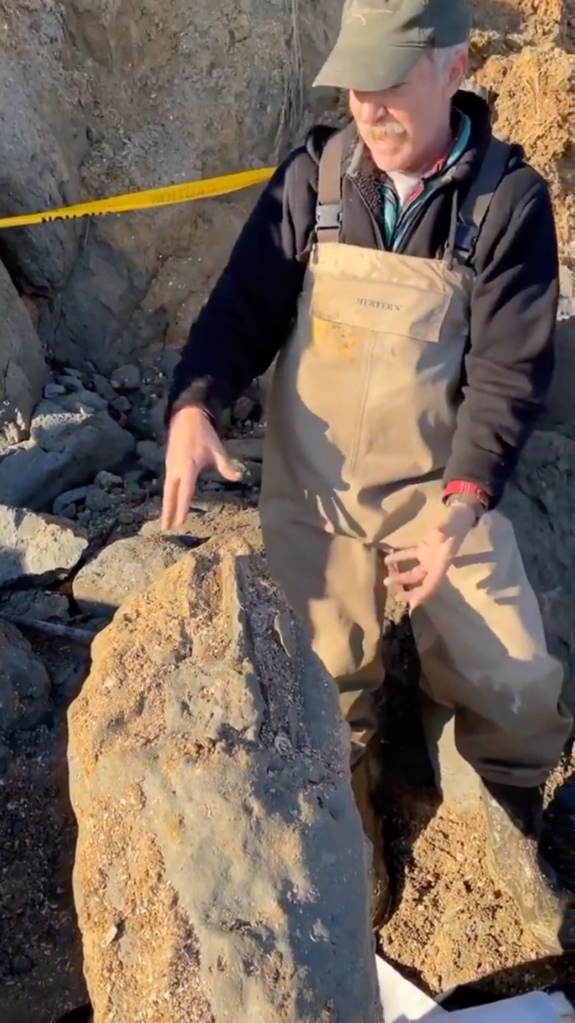650-pound fossil whale skull found in Maryland
A Pennsylvania family discovered a 650-lb fossil whale skull on the Chesapeake Bay in southern Maryland.
Cody Goddard, his wife, and their son were on Matoaka Beach in Calvert County when they saw a large, hardened block of sediment laying on the beach. According to the Calvert Marine Museum, the sediment had an “unusual” fossil protruding from one end.
The discovery was made in October, but due to the fossil’s sheer size, it took about two months for the fossil to be extracted.
The whale skull fossil was about five and a half feet long, 18 inches wide, and weighed approximately 650 pounds, according to the curator of paleontology at the Calvert Marine Museum, Stephen J. Godfrey.
Godfrey was contacted by Goddard about his discovery in October and worked with him to examine the large fossil.
Godfrey stated that the weight of the fossil mostly came, not from the skull itself, but from the unusual, cemented sediment that had formed around the skull.
“In a way, it created its own sarcophagus – its own little burial chamber that preserved it for millions of years and for us to be able to find,” he said.

On Dec. 19, Godfrey and his team from the Calvert Marine Museum Fossil Club successfully removed the fossil from the beach and brought it to the bayside museum for further research.
According to Godfrey, the skull is around 12 million years old, based on the sediment age along Calvert Cliffs. The skull came from a baleen whale, a type of whale that uses its teeth to filter its prey, plankton, from ocean water.
Compared to modern baleen whales, such as humpback whales, the prehistoric whale the skull came from was quite small and narrow at 5 1/2 feet long and about 18 inches wide.


“This would have been a very hydrodynamic type of whale, so it could probably swim fairly quickly,” Godfrey said. “And, of course, you’d want to because you have Megalodon swimming at that time, and you’re doing all you can to avoid being Megalodon’s next meal.”
Godfrey noted that the skull would be more completely analyzed in about two months, which will be the amount of time needed to remove the hardened sediment surrounding the skull.
When the skull is free of sediment, Godfrey and his team will be able to determine which baleen whale species the skull belonged to.
According to the Calvert Marine Museum, the skull — called “Cody” after Cody Goddard — is the most complete fossil whale skull ever recovered from that section of Calvert Cliffs.
Read the full article Here


